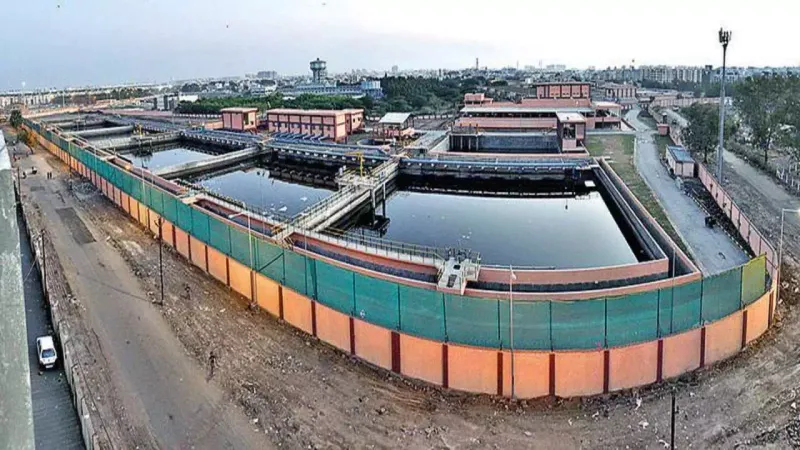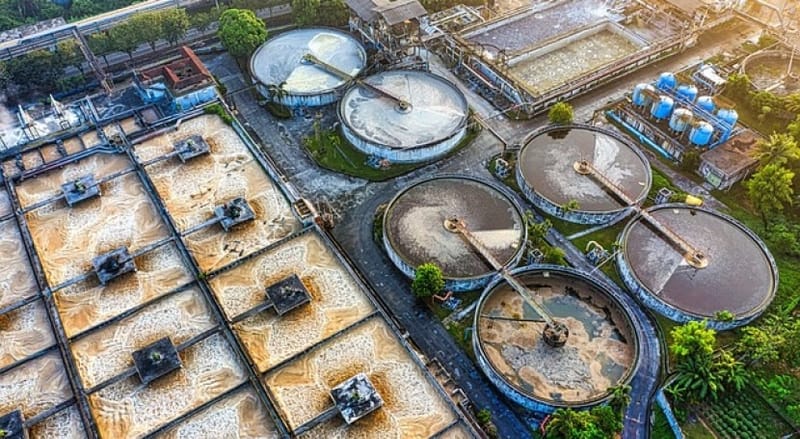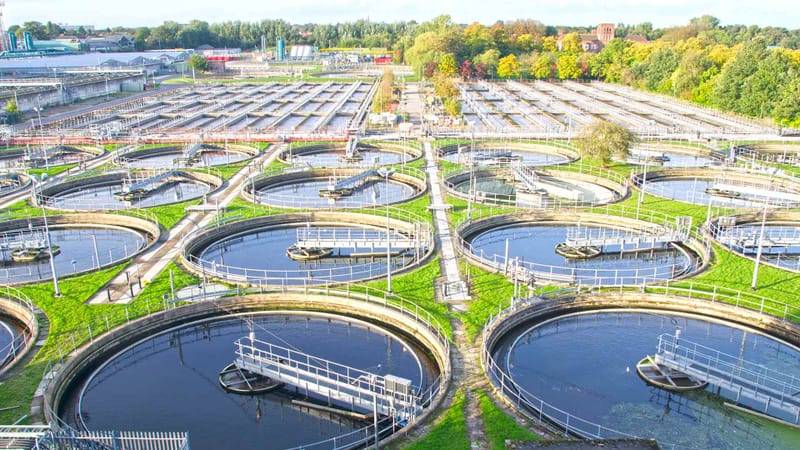Sustainable Solutions: Reusing Treated Municipal Sewage for Construction
Introduction to Municipal Sewage Treatment
In the face of mounting environmental challenges, the concept of sustainability has become increasingly central to urban development practices worldwide. As cities grapple with issues such as water scarcity, waste management, and resource depletion, innovative approaches are needed to rethink traditional construction methods and materials. One such approach gaining momentum is the reuse of treated municipal sewage in construction projects. By harnessing this often-overlooked resource, cities can not only address pressing environmental concerns but also foster economic resilience and social well-being. In this article, we delve into the intricacies of utilizing treated municipal sewage for construction, exploring its benefits, challenges, and diverse applications in urban development.

Advantages of Employing Treated Municipal Sewage
- Preservation of Resources and Advancement of Circular Economy Principles: The treated municipal sewage is rich in essential nutrients, organic matter, and minerals that can be repurposed to enrich soil quality and bolster the growth of vegetation. By integrating sewage sludge into construction materials such as soil-cement blocks, eco-bricks, or green roofs, urban centers can diminish their reliance on finite natural resources like sand, gravel, and topsoil. This not only safeguards invaluable resources but also propels the principles of a circular economy by completing the cycle of material utilization.
- Cost Efficiency and Enhancement of Financial Viability: Incorporating treated sewage into construction endeavors presents noteworthy opportunities for cost reduction when juxtaposed with conventional building materials. Sewage sludge is frequently accessible at minimal or no expense, particularly in regions endowed with robust wastewater treatment infrastructure. By integrating sewage-derived materials into construction elements, municipalities can curtail expenses linked to material procurement, thereby diminishing overall construction expenditures and augmenting the economic feasibility of infrastructure projects, particularly in locales confronting resource limitations.
- Environmental Conservation and Adaptation to Climate Variability: The reuse of treated municipal sewage in construction undertakings serves as a pivotal contributor to promoting environmental sustainability by diverting waste away from landfills and reducing the necessity for energy-intensive manufacturing processes associated with traditional building materials. Furthermore, sewage reuse aids in mitigating greenhouse gas emissions and fortifying climate resilience by sequestering carbon in soil and vegetation, amplifying ecosystem functions, and mitigating the heat island effect in urban settings.

Challenges and Considerations in Utilizing Treated Municipal Sewage for Construction
Regulatory Compliance and Safety Assurance:
Ensuring that the incorporation of sewage-derived materials in construction meets stringent regulatory standards and guidelines is crucial for upholding public health, safety, and environmental protection. Regulatory bodies across the globe set limits on contaminants such as heavy metals, pathogens, and organic pollutants present in sewage sludge-based products to mitigate potential risks to human health and the environment. Achieving compliance with these regulations necessitates the implementation of robust monitoring, testing, and quality control measures throughout the treatment, processing, and utilization phases. Strict adherence to regulatory requirements not only guarantees the safety and integrity of construction projects but also fosters trust among stakeholders regarding the responsible utilization of sewage-derived materials.
Quality Control and Performance Assurance:
Maintaining the quality and consistency of treated sewage sludge is imperative for the successful integration of these materials into construction applications. Variations in the composition of sewage, treatment methods, and storage conditions can significantly influence the physical, chemical, and mechanical properties of sewage-derived materials, thereby impacting their performance and longevity in construction projects. To tackle this challenge effectively, rigorous quality control protocols, material testing regimes, and performance evaluations are indispensable. By implementing stringent quality assurance measures, municipalities and construction firms can ensure the dependability, resilience, and durability of sewage-based construction products, thereby augmenting the overall sustainability and efficacy of infrastructure initiatives.
Public Perception and Stakeholder Engagement:
Overcoming societal prejudices, misconceptions, and resistance toward sewage-derived materials is pivotal for fostering widespread acceptance and adoption of sewage reuse in construction. Public perception often revolves around concerns regarding safety, cleanliness, aesthetic appeal, as well as apprehensions about odor, hygiene, and environmental impact associated with sewage-derived materials. Addressing these concerns requires proactive stakeholder engagement strategies. Engaging with communities, residents, advocacy groups, and other stakeholders through educational initiatives, outreach programs, and participatory decision-making processes can facilitate the building of trust, dispelling of myths, and promotion of social acceptance of sewage-derived construction materials. By transparently communicating the benefits, safety measures, and environmental advantages of sewage reuse, stakeholders can collaboratively work toward harnessing the potential of this innovative approach to sustainable urban development.

Applications of Treated Sewage in Construction
- Soil Stabilization and Ground Improvement: Treated sewage sludge offers a versatile solution for enhancing soil stability, strength, and permeability in various geotechnical and civil engineering projects. By blending sewage sludge with soil, aggregates, or stabilizers, cities can bolster the load-bearing capacity of weak or problematic soils, mitigate soil erosion, and prevent slope instability. Soil stabilization techniques utilizing sewage-derived materials find widespread application in diverse projects such as road construction, embankment reinforcement, land reclamation, erosion control, and foundation stabilization endeavors.
- Building Materials and Construction Products: Sewage sludge presents an innovative avenue for incorporating sustainable elements into a broad spectrum of construction materials. From bricks and blocks to tiles, pavers, panels, and roofing materials, sewage-derived materials can be seamlessly integrated into various construction products. Through advanced manufacturing processes like compaction, extrusion, or molding, sewage-derived materials can be transformed into robust, functional, and visually appealing building components with properties akin to conventional counterparts. These sewage-based construction materials offer versatility, durability, and sustainability advantages, rendering them suitable for an array of applications in residential, commercial, industrial, and infrastructure projects.
- Green Infrastructure and Urban Landscaping: The utilization of treated sewage can play a pivotal role in supporting the development of green infrastructure and urban landscaping initiatives aimed at enhancing environmental quality, biodiversity, and community well-being. In green infrastructure projects, treated wastewater is employed for irrigating parks, gardens, green roofs, and recreational areas, thereby promoting water conservation, fostering vegetation growth, and bolstering ecosystem resilience. Additionally, sewage-derived materials such as compost, mulch, and biochar can be effectively utilized to enhance soil health, facilitate nutrient cycling, and improve water retention in urban landscapes. By integrating sewage reuse into sustainable urban greening efforts, cities can advance their goals of creating resilient, vibrant, and ecologically balanced urban environments.
- Concrete and Cement Applications: Treated sewage sludge can be utilized as a partial replacement for conventional aggregates or supplementary cementitious materials in concrete production. By incorporating sewage-derived materials into concrete mixes, cities can reduce the consumption of virgin aggregates, lower the carbon footprint of concrete production, and enhance the durability and performance of concrete structures. Sewage sludge ash, a byproduct of sewage incineration, can also be utilized as a pozzolanic material in cementitious blends, improving the strength, durability, and chemical resistance of concrete. Applications include bridges, highways, pavements, buildings, and other infrastructure projects.
- Landfill and Mine Site Remediation: Treated sewage sludge can be utilized in landfill capping and mine site reclamation projects to provide a protective barrier, control leachate, and promote vegetation establishment. By incorporating sewage-derived materials into engineered caps or cover systems, cities can minimize water infiltration, reduce soil erosion, and mitigate the release of contaminants from landfill and mine waste. Sewage sludge can also be utilized as a soil amendment to restore degraded lands, improve soil fertility, and support ecosystem recovery in post-mining landscapes. These applications contribute to environmental restoration, habitat enhancement, and long-term land management efforts.

Conclusion
The reuse of treated municipal sewage for construction represents a multifaceted and transformative approach to sustainable urban development. By harnessing the potential of sewage-derived materials, cities can address pressing environmental challenges, promote resource efficiency, and advance the principles of circular economy and climate resilience. However, realizing the full potential of sewage reuse requires collaboration among stakeholders, investment in research and innovation, and a commitment to regulatory compliance and public engagement. As cities strive to build resilient, inclusive, and sustainable communities, let us embrace the opportunities presented by sewage-derived materials and pave the way for a greener, cleaner, and more resilient urban future.